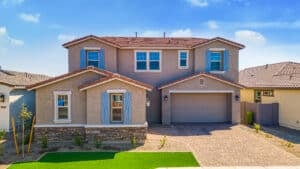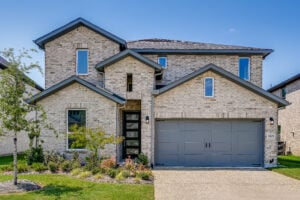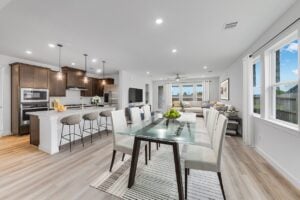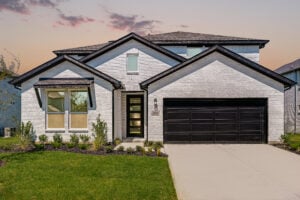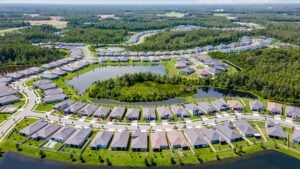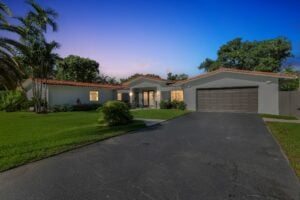Drone photography is now a key tool in real estate, allowing you to showcase properties with stunning aerial views. But having just a drone isn’t enough. The right accessories can improve your workflow, ensure safety, and deliver better image quality. Here’s a quick rundown of 10 must-have drone accessories:
- Extra Batteries: Extend flight time beyond the typical 20–30 minutes.
- ND Filters: Control light exposure for smoother videos and balanced photos.
- High-Capacity MicroSD Cards: Prevent running out of storage during shoots.
- Smart Controller: Built-in screen and advanced controls for better precision.
- Propeller Guards: Protect your drone and surroundings in tight spaces.
- Carrying Case/Backpack: Safeguard and organize your gear while traveling.
- Landing Pad: Provide a clean, stable surface for safer takeoffs and landings.
- Camera Cleaning Kit: Keep your lens dust-free for sharper footage.
- Spare Propellers: Quickly replace damaged blades to avoid downtime.
- Sun Hood for Controller: Block glare for clearer screen visibility in sunlight.
Quick Comparison
| Accessory | Price Range | Key Benefit | Drawback |
|---|---|---|---|
| Extra Batteries | $80–$150 | Longer flight time | Expensive upfront cost |
| ND Filters | $50–$200 | Better exposure in bright conditions | Requires practice to use |
| High-Capacity MicroSD | $30–$120 | Avoid storage interruptions | Risk of data loss |
| Smart Controller | $400–$650 | Better control and built-in screen | Bulky and costly |
| Propeller Guards | $15–$40 | Protects drone and surroundings | Slight impact on performance |
| Carrying Case/Backpack | $50–$300 | Protects and organizes equipment | Can be bulky |
| Landing Pad | $20–$80 | Ensures clean takeoffs/landings | Can be affected by wind |
| Camera Cleaning Kit | $15–$50 | Maintains lens clarity | Needs frequent use |
| Spare Propellers | $10–$30 | Avoids shoot disruptions | Takes time to replace |
| Sun Hood for Controller | $25–$60 | Improves screen visibility outdoors | Can be awkward to set up |
Start with the basics – extra batteries, memory cards, and a cleaning kit – then expand your gear as needed. These tools ensure smooth operations and sharper visuals, helping you deliver professional results every time.
ESSENTIAL Gear for Real Estate Photo and Video: What’s In My Bag 2023
1. Extra Batteries
Drone batteries typically provide just 20–30 minutes of flight time, which can feel incredibly limiting during real estate photography. Capturing every angle of a large property or dealing with tricky lighting conditions often requires more time than a single battery can offer.
Boosts Efficiency During Shoots
Extra batteries can completely change how you approach real estate shoots. Instead of rushing to finish before the battery dies or cutting sessions short, you can focus on capturing the perfect shot from every angle. Quick battery swaps keep things running smoothly, reducing downtime and eliminating the stress of waiting for a recharge. This is especially important when working under tight deadlines, dealing with on-site clients, or shooting in remote locations, like rural estates or waterfront properties, where access to power outlets is limited .
Enhances Flight Safety
Managing your drone’s power effectively is critical for safe operation, especially when flying over valuable properties. Extra batteries let you land and swap power sources long before the battery hits critical levels, ensuring safer flights and avoiding the risk of mid-air emergencies.
Flying on a low battery can lead to forced emergency landings or even crashes, which could damage your equipment or endanger the property below. For extended sessions or time-lapse photography, a single battery simply won’t cut it. Having multiple fully charged batteries on hand ensures you can safely complete these more demanding shots without pushing your equipment to its limits.
Reliable power is essential for professional aerial photography. With longer flight times and improved safety, extra batteries provide the foundation you need to deliver high-quality results. They also prepare you for additional upgrades, like ND filters, to further elevate your drone photography.
2. ND Filters
When it comes to capturing stunning drone shots in bright daylight, ND filters are a game-changer. These filters reduce the amount of light entering the camera without altering colors, giving you greater control over exposure settings. Let’s dive into how ND filters enhance both image quality and shooting efficiency.
Enhances Image and Video Quality
ND filters are your secret weapon against overexposed skies and harsh shadows. They help maintain proper exposure and ensure smooth video at 24fps, even in intense sunlight. Without them, bright conditions force your camera to use faster shutter speeds, which can result in jittery footage and blown-out highlights in photos.
By cutting down light by 3-6 stops, ND filters allow you to achieve the ideal 180-degree shutter speed (e.g., 1/48th of a second at 24fps) on sunny days. For instance, pairing the DJI Mini 3 Pro with ND8, ND16, and ND32 filters ensures balanced exposure while capturing smooth, cinematic panning shots of luxury homes or landscapes.
These filters also add a touch of motion blur, elevating the visual appeal of elements like water and clouds. Pools, fountains, or rivers appear silky and elegant, while moving clouds gain a dramatic effect. Even swaying trees or grass bring a sense of life and movement to your shots, making them feel more dynamic and natural compared to static imagery.
Boosts Operational Efficiency
ND filters don’t just elevate your visuals – they make your workflow smoother too. With the right filter, you can lock in your aperture and shutter speed, letting the filter handle light adjustments. This eliminates the need for constant setting tweaks and reduces the time spent fixing exposure issues during editing.
Most professional drone photographers rely on a 3-filter kit tailored for different lighting conditions: ND8 for overcast days, ND16 for partly cloudy skies, and ND32 for bright, sunny environments. This compact setup covers nearly all real estate photography scenarios, minimizing the need for frequent camera adjustments mid-shoot.
Swapping filters is quick – usually under 30 seconds – which adds up to significant time savings. Starting with properly exposed footage means less effort in post-production, especially when it comes to color grading and fine-tuning. This streamlined process can save hours of editing, making ND filters an essential tool for any drone photographer.
3. High-Capacity MicroSD Cards
Running out of storage in the middle of a shoot can completely disrupt your workflow. High-capacity microSD cards solve this issue by providing ample storage, ensuring you can keep shooting without interruptions. Just like extra batteries and ND filters, reliable storage is a must-have for capturing high-quality property footage.
Keeps Your Workflow Smooth
Modern drones capture 4K video at 60fps, generating about 375MB of data per minute. A single day of shooting multiple properties can easily result in 20-30GB of footage. If you’re using a 32GB or 64GB card, you’ll find yourself stopping frequently to swap cards or delete files – a frustrating and time-consuming process.
Upgrading to 256GB or 512GB microSD cards eliminates these interruptions. Cards with a V30 rating (30MB/s minimum write speed) are ideal for recording 4K video, while V60 or V90 cards handle higher bitrates and burst photography with ease. Using slower cards can lead to recording failures or force your drone to lower video quality automatically, wasting precious time and effort.
These high-capacity cards also make post-production simpler. Instead of managing multiple smaller cards and sorting files from various devices, you can store an entire property shoot on a single card. This reduces the risk of misplaced footage and streamlines your file organization when you’re back at your desk.
Built Tough for the Field
Real estate shoots often take you to outdoor locations where conditions can be unpredictable. Industrial-grade microSD cards are built to withstand extreme temperatures, from -13°F to 185°F. Whether you’re filming a beachfront home in Florida or a snowy cabin in Colorado, these cards perform reliably.
Waterproof and shockproof certifications add another layer of protection. Cards with IPX7 waterproof ratings can survive brief water exposure, while shock-resistant models are designed to handle vibrations and impacts during drone transport. This durability ensures your footage stays safe, even in challenging environments.
Despite their rugged design, these cards remain incredibly portable. A 512GB card weighs less than 0.5 grams, making it easy to carry backups without adding bulk to your gear.
For professional drone work, options like the SanDisk Extreme Pro and Samsung EVO Select offer a great balance of capacity and durability. These cards are built to handle thousands of write cycles, making them a reliable choice for heavy use during busy real estate seasons.
4. Smart Controller
A smart controller takes your drone to the next level, transforming it from a basic flying tool into a professional imaging device. Unlike standard controllers that rely on your smartphone, these advanced controllers come with built-in screens and dedicated controls, offering greater precision and convenience. The result? Sharper images, quicker setups, and safer flights.
Enhances Image and Video Quality
When it comes to capturing stunning visuals, smart controllers provide tools like real-time histogram displays and focus peaking, making it easier to fine-tune exposure and sharpness. Imagine a 5.5-inch screen with 1,000 nits of brightness – perfect for clear visibility even under direct sunlight. Plus, with dedicated controls for ISO, shutter speed, and aperture, you can quickly tweak settings on the fly. This is especially helpful for techniques like HDR photography, where precision is key.
Boosts Operational Efficiency
Say goodbye to the hassle of connecting your smartphone or dealing with lengthy setups. With a smart controller, you can power up and start flying in just 30 seconds. Dual-band transmission technology ensures a strong connection over long distances – up to 6.2 miles – giving you the flexibility to capture everything from sprawling landscapes to towering skyscrapers. Added features like waypoint missions and automated flight patterns (such as orbit shots or reveal sequences) make your workflow smoother, saving you valuable time when managing multiple shoots in a single day.
Improves Flight Safety
Safety gets a major upgrade with a dual-screen layout that keeps critical flight data – like battery levels, GPS status, and obstacle alerts – visible alongside your camera feed. Enhanced GPS accuracy, combined with GLONASS support, ensures reliable positioning and a more dependable return-to-home function if the signal is lost. Real-time airspace monitoring also alerts you to no-fly zones or temporary flight restrictions before you even take off, which is especially crucial as FAA regulations continue to evolve.
Built for the Field
Despite their advanced capabilities, smart controllers are designed with portability in mind. Take the DJI Smart Controller, for example – it weighs just 1.2 pounds and folds neatly to fit in your camera bag. Its built-in battery offers up to 2.5 hours of continuous use, making it ideal for a full day of shooting. Built to withstand real-world conditions, it features weather-resistant construction to handle light rain and dust. It also operates reliably in temperatures ranging from 14°F to 104°F. With a rugged screen protected by Gorilla Glass, it can endure the wear and tear of frequent use while maintaining crystal-clear visuals. This makes it an essential tool for real estate photographers looking to elevate their game.
5. Propeller Guards
Propeller guards are attachments that surround your drone’s propellers, creating a protective barrier against obstacles. While they might appear to be just another accessory, they can be the difference between a smooth shoot and an expensive repair bill. This is especially true when you’re navigating tight spaces around properties. These guards not only help prevent damage but also keep your drone operational during crucial moments.
Boosts Safety During Flights
Propeller guards are a key safety feature when flying in tricky environments. Real estate photography often demands precision flying near buildings, under eaves, or through narrow spaces. These guards act as a buffer, protecting both the propellers and nearby surfaces from direct contact. They can absorb minor bumps, reducing the risk of damage to your drone or the property.
Another major benefit? They lower the chance of injuries during open houses or client interactions. The spinning blades of a drone can be hazardous, but with guards in place, they’re much less of a threat. This added layer of safety ensures you can focus on capturing great shots without worrying about accidents.
Enhances Operational Efficiency
Propeller guards can save you time by cutting down on maintenance. Even a small collision without guards can damage your propellers, forcing you to stop, inspect, and possibly replace them. With guards, minor bumps won’t interrupt your workflow, allowing you to stay on schedule and avoid unnecessary delays.
They also give you the confidence to fly closer to architectural features and attempt more daring shots. This ability to navigate tight spaces and capture dynamic angles can elevate your footage, giving your clients high-quality visuals that stand out.
Practical Design for Field Use
Modern propeller guards are built with portability and ease of use in mind. Made from lightweight materials, they add just 1-2 ounces to your drone, so you won’t see much impact on battery life or maneuverability. Many guards feature quick-release systems, letting you attach or remove them in about 30 seconds. This flexibility is perfect for switching between shots that require guards and those that don’t.
When it comes to durability, designs vary. Rigid plastic guards offer solid protection but can transfer impact forces to the drone’s motors. Flexible guards, on the other hand, absorb energy during collisions, reducing stress on your drone’s internal components. Some models even come with modular sections, so you can replace individual parts if needed.
6. Carrying Case or Backpack
A carrying case or backpack is an essential tool for protecting your drone and accessories while you’re on the move. Real estate photographers often find themselves traveling between multiple properties in a single day, and keeping equipment secure and organized is a top priority. A well-designed case not only protects your drone, batteries, and accessories but also helps streamline your workflow, ensuring everything you need is safe and ready for action.
Protects Your Equipment During Transport
Transporting a drone can be tricky – its delicate components, like the gimbal and camera, are especially vulnerable to damage. A sturdy carrying case with custom foam inserts provides a snug fit for each piece of equipment, preventing movement and reducing the risk of damage to sensitive parts like internal sensors or the camera mechanism.
Temperature control is another key feature. Cases with insulated compartments help stabilize battery temperatures, keeping them safe in extreme conditions – whether it’s freezing below 32°F or sweltering above 104°F. This not only extends battery life but also minimizes safety risks associated with temperature fluctuations.
Boosts Efficiency on the Job
Professional drone cases are designed with organization in mind, saving you precious time during setup. With dedicated compartments for batteries, memory cards, and filters, you won’t waste time digging through a bag to find what you need. Quick-access pockets for items like lens cloths and spare propellers ensure your most-used tools are always within reach.
Some advanced cases even come with built-in USB ports or charging stations, allowing you to recharge batteries while traveling between locations. Features like cable management systems mean you’ll arrive at each property with fully charged gear, maximizing your productivity and minimizing downtime.
Built for Portability and Durability
Modern carrying cases strike the perfect balance between durability and ease of use. Lightweight materials, such as carbon fiber, offer exceptional protection without adding unnecessary bulk. For photographers who spend long days walking large properties, backpack-style cases evenly distribute the weight across your shoulders, reducing fatigue.
Weather resistance is another must-have feature, especially when outdoor shoots can’t wait for ideal conditions. Cases with IP67 ratings provide full protection against dust and can even handle temporary water exposure. Additional features like pressure release valves make opening the case after changes in elevation hassle-free, while reinforced corners and impact-resistant shells guard against drops and rough handling. Lockable latches add an extra layer of security for your expensive gear.
Investing in a high-quality case isn’t just about convenience – it’s about protecting your equipment from damage, avoiding costly repairs, and ensuring reliable performance across countless shoots. It’s a small price to pay for peace of mind and efficiency in the field.
sbb-itb-82c5f45
7. Landing Pad
A landing pad provides a stable and clean surface for drone takeoffs and landings, which is especially useful when shooting real estate properties with uneven or challenging terrain. Whether you’re dealing with muddy grounds or dusty lots, many property locations simply aren’t ideal for launching or landing a drone. A landing pad not only protects your equipment but also ensures a debris-free start, making it an essential tool for real estate photographers who prioritize both safety and quality.
Protects Image and Video Quality
Dust and debris stirred up during takeoff can seriously affect the quality of your footage. Launching your drone from dirt lots, gravel driveways, or freshly mowed grass often results in particles being kicked up by the propellers. These particles can settle on your camera lens or gimbal, leading to blurry images, visible spots, or even damage to sensitive components.
Using a landing pad solves this issue by offering a clean, stable surface for takeoffs and landings. Its smooth and elevated design minimizes the disturbance of debris, ensuring your drone’s camera remains clear and functional. For real estate photography, where sharp and spotless images are critical to showcasing properties, this simple accessory can make a noticeable difference.
Enhances Safety During Landings
Uneven or unpredictable surfaces can pose a risk to your drone. A landing pad provides a flat, stable platform, reducing the chances of tipping over during landings. Without it, soft ground, slopes, or hidden obstacles like sprinkler heads or rocks could lead to damaged propellers or gimbals.
Additionally, the high-contrast colors and reflective elements on most landing pads serve as visual aids for both the pilot and the drone’s sensors. This is particularly helpful in low-light conditions, such as during golden hour shoots or in shadowy areas. Many drones rely on visual positioning systems that work better with the distinct patterns found on landing pads, further improving landing accuracy and safety.
Streamlines Workflow for Real Estate Shoots
Efficiency is key in real estate photography, and a landing pad can help you work faster and more effectively. Quick to set up and easy to pack away, a landing pad lets you spend less time preparing and more time capturing the perfect shots. Many models are designed to fold or roll up in seconds, making it easy to move between different locations on a property.
The consistent surface also makes it easier to perform quick tasks like swapping batteries or memory cards without disrupting your workflow. This reliability is especially important when you’re racing against changing light conditions to capture a property at its best.
Built for Portability and Durability
Modern landing pads are designed with portability and field use in mind. Made from lightweight materials like ripstop nylon or waterproof polyester, most pads weigh under 2 lbs and can be folded into a compact size for easy transport. Many also come with stakes or sandbag attachments to keep them secure in windy conditions.
Durability is another key feature. Waterproof coatings protect against moisture, while UV-resistant materials prevent fading and deterioration under the sun. Reinforced edges and double-stitched seams ensure the pad can handle regular use, making it a smart, long-term investment for protecting your drone and maintaining an efficient workflow.
8. Camera Cleaning Kit
Keeping your drone’s camera lens spotless is a must for aerial real estate photography. A camera cleaning kit helps you maintain the lens and other sensitive components, preventing dust and dirt from interfering with your shots. Even a tiny speck of dust can blur your images, making it challenging to capture the sharp, professional-quality visuals that real estate photography requires. Beyond image quality, regular cleaning also ensures your drone operates smoothly during flights.
Enhances Image and Video Quality
A clean lens is key to capturing clear, detailed footage. Dust or smudges can distort your images or videos, so regular cleaning ensures your drone consistently delivers sharp, high-quality results. Plus, it helps avoid disruptions during pre-flight checks, keeping your equipment ready to perform at its best.
Boosts Workflow Efficiency
Adding a quick cleaning step to your pre-flight routine saves time in the long run. It reduces the need for heavy post-processing edits, letting you focus more on capturing stunning visuals and less on fixing them later.
9. Spare Propellers
Drone propellers are delicate and can sometimes fail mid-flight, potentially disrupting your real estate photography session. That’s why carrying spare propellers is a must. They not only help you avoid interruptions but also ensure your drone operates safely and reliably.
Keeps Your Shoot on Schedule
When you’re working with tight deadlines and clients who expect results, a damaged propeller doesn’t have to mean the end of your session. Having spares on hand allows you to quickly swap out the damaged propeller and get your drone back in the air in just minutes. This can be a lifesaver, especially when you’re managing multiple property shoots or chasing the perfect lighting conditions.
Enhances Flight Safety
Safety is just as important as efficiency. Damaged or worn-out propellers can affect your drone’s stability and control, increasing the chances of an accident. Replacing compromised propellers immediately ensures your drone maintains proper lift and control, which is critical when navigating around buildings or other obstacles.
Compact and Easy to Carry
Spare propellers are lightweight and compact, making them easy to pack in your drone bag without adding extra bulk. Many popular drone models, like the DJI Mini 2 & Mini 2 SE, DJI Mini 3/4 & Mini 3/4 Pro, DJI Air 2s, DJI Air 3, and DJI Mavic 3 Classic & Pro, have readily available spare propeller sets, so you’re always prepared for any mishap.
10. Sun Hood for Controller
Bright sunlight can make it nearly impossible to see your controller screen, throwing a wrench into your ability to frame shots or tweak settings. A sun hood solves this issue by creating a shaded area around your screen, giving you a clear view no matter how intense the sunlight is. This simple accessory not only improves screen visibility but also helps you capture better images while speeding up your workflow.
Better Image and Video Quality
When glare takes over your screen, you’re left guessing about exposure, framing, and focus – key elements for capturing professional real estate photos. A sun hood removes that guesswork. By blocking out sunlight, it allows you to see your screen clearly, so you can make real-time adjustments to composition and exposure.
This means you’ll spot issues like harsh shadows or overexposed highlights right away, rather than discovering them later during editing. With a sun hood, you can confidently capture exteriors, landscaping, and neighborhood views with precision, ensuring your shots look polished from the start.
Makes Your Workflow Smoother
A sun hood doesn’t just help with visibility – it makes your entire shooting process more efficient. By eliminating the need to search for shade or redo poorly framed shots, you save valuable time and conserve your drone’s battery life.
Clear screen visibility means fewer retakes, so you can get the perfect shot on the first try. As a result, you’ll spend less time troubleshooting and more time capturing the footage you need.
Designed for Easy Field Use
Most sun hoods are lightweight, foldable, and built to handle outdoor conditions. They attach to your controller quickly using clips, magnets, or straps, making setup a breeze. Whether you’re battling bright sunlight or shifting light conditions, you can easily put the sun hood on or take it off in seconds, keeping your workflow uninterrupted.
Accessory Comparison Table
Here’s a concise breakdown of the ten key accessories mentioned earlier:
| Accessory | Price Range | Image Quality Boost | Portability | Compatibility | Key Benefits | Main Drawbacks |
|---|---|---|---|---|---|---|
| Extra Batteries | $80-$150 each | High | Excellent | Universal | Longer flight times | Costly, charging management |
| ND Filters | $50-$200 set | Very High | Excellent | Model-specific | Better exposure control | Steeper learning curve |
| High-Capacity MicroSD Cards | $30-$120 | High | Excellent | Universal | Fast speeds, large storage | Risk of data loss |
| Smart Controller | $400-$650 | High | Good | Limited models | Built-in screen, extended range | Bulky and pricey |
| Propeller Guards | $15-$40 | Medium | Good | Model-specific | Protects property | Slight performance drop |
| Carrying Case | $50-$300 | Low | Fair | Size-dependent | Protects equipment | Occupies storage space |
| Landing Pad | $20-$80 | Medium | Good | Universal | Clean takeoffs and landings | Can be affected by wind |
| Camera Cleaning Kit | $15-$50 | High | Excellent | Universal | Maintains image clarity | Requires consistent use |
| Spare Propellers | $10-$30 set | Medium | Excellent | Model-specific | Avoids canceled shoots | Time needed for installation |
| Sun Hood | $25-$60 | Medium | Good | Controller-specific | Improved screen visibility | Setup can take time |
Prioritizing Your Accessories
If you’re on a budget but want to maximize efficiency, start with extra batteries ($80–$150), high-capacity microSD cards ($30–$120), and a camera cleaning kit ($15–$50). Together, these three essentials cost under $300 and provide a significant boost to your workflow.
For those looking to refine image quality and enhance their setup, consider ND filters ($50–$200) and a sun hood ($25–$60). These additions help optimize exposure and make outdoor shoots easier.
If you’re a seasoned professional, investing in a smart controller ($400–$650) and a premium carrying case ($150–$300) can elevate your control and keep your gear protected.
Most professionals spend between $800 and $1,000 for a balanced setup, though total investments can range from $695 to $1,650. These accessories are essential for delivering consistent, high-quality aerial shots, particularly in real estate photography.
Conclusion
Choosing the right drone accessories can transform ordinary aerial shots into stunning visuals that help properties sell faster. The ten accessories highlighted in this guide tackle common challenges like limited battery life and tricky lighting, making them invaluable for real estate photographers.
Yes, building a well-rounded accessory kit requires some upfront spending, but the payoff is worth it. Tools like extra batteries, ND filters, and high-capacity microSD cards not only improve image quality but also keep you shooting without interruptions. These upgrades don’t just benefit your workflow – they also help you deliver top-notch results to clients.
Take platforms like HomeJab, for example. They depend on dependable equipment to meet tight deadlines and high standards, connecting real estate professionals with photographers who can deliver HDR photos, walkthrough videos, and 3D tours in as little as 24 hours. With the right gear, you’ll be equipped to meet these demands consistently.
The best approach is to start with the basics – extra batteries, ample storage, and a camera cleaning kit – and build your kit over time as your business grows. In real estate photography, it’s not about having the priciest equipment; it’s about being prepared and reliable. Photographers with backup gear and a solid setup often outperform those relying solely on top-tier drones.
Ultimately, your drone’s performance is only as strong as the accessories you pair with it. Invest in quality tools, and you’ll not only elevate your photography but also strengthen your reputation in the competitive real estate market.
FAQs
What are ND filters, and how do they enhance drone footage for real estate photography?
ND (Neutral Density) filters play a key role in elevating drone footage for real estate photography. These filters limit the amount of light entering the camera, helping to prevent overexposure. This control over light also allows photographers to adjust the shutter speed, resulting in smoother motion blur in videos and sharper, well-balanced photos – particularly useful in bright daylight.
For real estate photographers, ND filters make it easier to capture polished, eye-catching property visuals that highlight homes at their best.
What are the must-have drone accessories for beginners in real estate photography?
If you’re new to real estate photography with drones, having the right accessories can make your work much easier and more effective. Start with extra batteries – they’re essential for extending your flight time and ensuring you don’t run out of power during a shoot. Another must-have is a set of ND filters, which help you manage light exposure and capture sharp, high-quality images, especially in bright sunlight. Finally, invest in a sturdy carrying case to protect your drone and gear while traveling. These tools can set you up for success and help you produce professional-level results from the beginning.
How does a smart controller improve drone performance and safety for real estate photography?
A smart controller plays a key role in improving drone performance and ensuring safer flights. By providing precise and stable control, it minimizes the chances of crashes or errors during operation. It also enables real-time monitoring, making it easy to adjust camera angles and flight paths on the fly. This ensures smooth handling and helps capture sharp, high-quality visuals of properties.
Equipped with advanced tools, a smart controller streamlines drone operations, allowing real estate photographers to produce breathtaking aerial images with greater ease and confidence.


